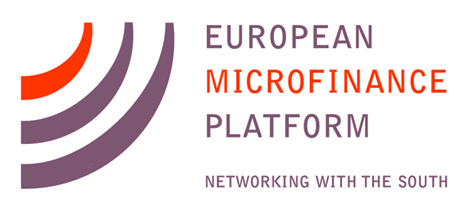At  Thursday’s session on savings groups at European Microfinance Week, Roy Mersland of the Norway-based Center for Research on Social Enterprises and Microfinance (CERSEM) discussed the preliminary analysis his team made on the SAVIX database when it held information from 200,000 savings groups, drawing on data from 1,200 support projects.
Thursday’s session on savings groups at European Microfinance Week, Roy Mersland of the Norway-based Center for Research on Social Enterprises and Microfinance (CERSEM) discussed the preliminary analysis his team made on the SAVIX database when it held information from 200,000 savings groups, drawing on data from 1,200 support projects.
The database has since grown to cover 424,000 savings groups – also known as village savings and loan (VSL) associations – with 9 million members in 75 countries, according to Hugh Allen of VSL Associates, the Germany-based coordinator of SAVIX. He estimates that a total 786,000 savings groups owned by 17 million members have been initiated by NGOs in 76 countries. An unknown number of additional groups exist, including many replicated by members of previously established groups.
Dr Mersland found that one third of the savings groups studied provide non-financial offerings such as health services or education. The provision of these services does not correlate with different rates of return to members. However, unmanaged groups are correlated with higher returns. (Savings groups are often supported by NGOs during their first year of operation.)
Mr Allen explained that most savings groups are in rural Africa. He argued that certain tools are important for the success of groups. For example, a sturdy metal box for storing cash boosts members’ confidence in the system. This box often has three locks on it, so the cash in it cannot be stolen by just one or two members. Mr Allen also suggested a simple system of separate bags – such as one for money for loan funds and a second for social purposes – can help keep the group’s operations transparent to all members. (Many groups put a portion of their funds into a social fund that can be used as insurance to pay out to members experiencing hardship.)
Dr Mersland reported that the average cash box holds the equivalent of USD 285, including USD 20 in savings from each member plus USD 8 in interest earnings per member. Of the groups in SAVIX, 9 percent link to formal financial services providers. Three quarters of these linkages are for borrowing money.
Linda Nakato of CERSEM offered additional analysis from the SAVIX database regarding linkages. Groups that use the services of external financial services providers often borrow at the start of a cycle, when the cash box usually contains less cash. (Savings groups cash out all funds on a periodic basis, usually annually.) In contrast, groups more often use formal savings avenues later in the cycle, when the cash box would have more money in it and thus would be more of a target for theft.
The rate of linkages with formal financial services providers is not correlated with attendance at group meetings or with the gender composition of groups, but it is negatively correlated with repayment rates. Although higher rates of linkage to credit services are not correlated with higher dropout rates, savings linkages are. One possibility is that members like the idea of seeing the box that holds their savings at each meeting. (Groups generally meet each week.)
Grace Majara of Switzerland-based NGO CARE International described her organization’s work to lower savings groups’ costs through an app called Chomoka. The app, which CARE is launching in Tanzania, can be used to digitize groups’ transactions; handle record keeping; and perform calculations for the distribution of the groups’ cash at the end of their cycles. Other features of the app include payment reminders sent to members via SMS and the creation of financial histories for each member, which can be used to calculate credit scores.
This sponsored feature is part of a series on European Microfinance Week, which was held from November 14 through 16 in Luxembourg by the European Microfinance Platform (e-MFP), a network of over 130 financial-inclusion stakeholders. MicroCapital has been engaged to promote and document the event.
Additional Resources
Randomized Controlled Trial Shows Significant Impact from Financial Education in Uganda
https://www.microcapital.org/special-report-randomized-controlled-trial-shows-significant-impact-from-financial-education-in-uganda/
European Microfinance Week 2018
http://www.e-mfp.eu/european-microfinance-week-2018/information
MicroCapital Coverage of European Microfinance Week 2012-2018
https://www.microcapital.org/category/european-microfinance-week/
Similar Posts:
- SPECIAL REPORT: European Microfinance Week 2023 Opens With Action Group Meetings, Including Investors Sharing Strategies for Measuring Social Performance #EMW2023
- SPECIAL REPORT: Sounding Alarm Bells on Financial Health: Inclusion Is Not Sufficient
- SPECIAL REPORT: How to Achieve Responsible Digital Financial Services: European Microfinance Week Opens
- SPECIAL REPORT: Green Action Group Celebrates 10th Anniversary at European Microfinance Week #EMW2023
- MICROFINANCE PAPER WRAP-UP: “Predictors of Microfinance Sustainability: Empirical Evidence from Bangladesh,” by Maeenuddin et al
